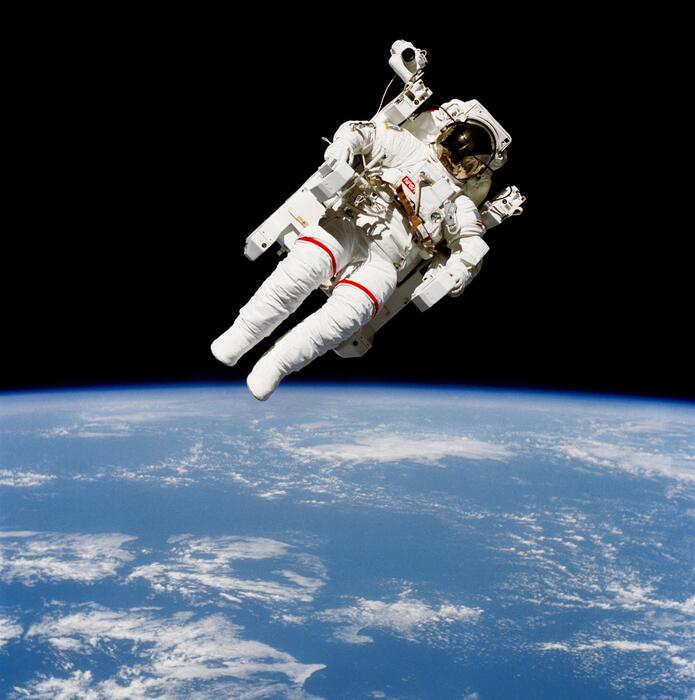40 years have passed since the first 'wireless' spacewalk: on 7 February 1984, NASA astronaut Bruce McCandless II, on board the tenth mission of the Space Shuttle Challenger, tested for the first time the 'space armchair' called Manned Maneuvering Unit, a device that allowed astronauts to move away from the shuttle independently, without those cables called 'umbilical cords'.
This is the same rocket backpack that George Clooney uses in the first part of the film Gravity.
To ease the tension of the moment, McCandless mimicked the famous phrase uttered by Neil Armstrong when he set foot on the Moon: "It may be one small step for Neil, but it's one giant step for me."
That mission produced some of the most iconic photographs ever taken in space, depicting McCandless floating above the Earth without safety cables.
The photos were taken by pilot Hoot Gibson and, as expected, made magazine covers.
McCandless, who passed away in 2017, remained outside the shuttle for almost six hours, moving up to 98 meters away.
The MMU, equipped with 24 small rocket engines, was designed to allow astronauts to recover or repair satellites without the shuttle being forced to get too close and consuming fuel.
After the first test it was used in several missions, but the Challenger disaster which exploded in 1986 sent it into retirement because it was deemed too expensive and risky.
In 1994, a smaller and more manageable version called Safer was developed, which however is present in the equipment only for precautionary reasons, since wireless spacewalks have no longer been carried out.
The Safer has an autonomy of ten minutes and is positioned under the astronauts' backpack: in the event of an accident, it allows them to return to the shuttle or the International Space Station.
Reproduction reserved © Copyright ANSA

